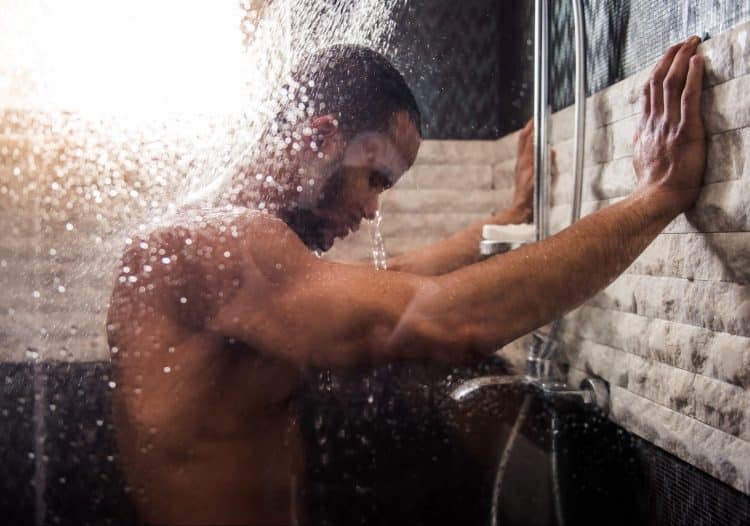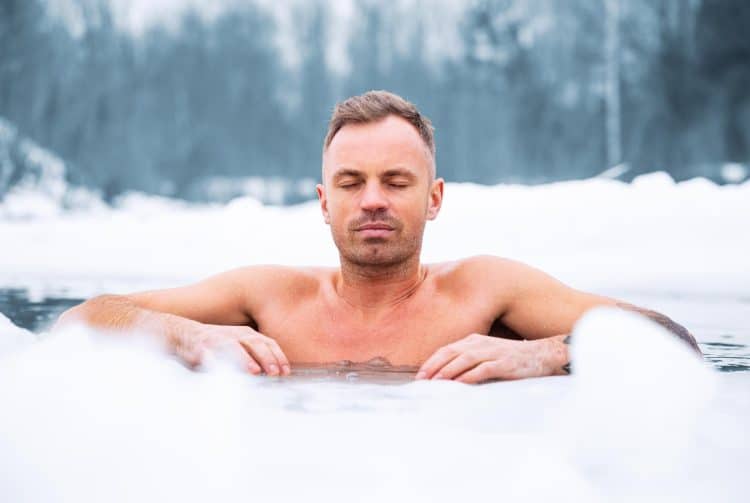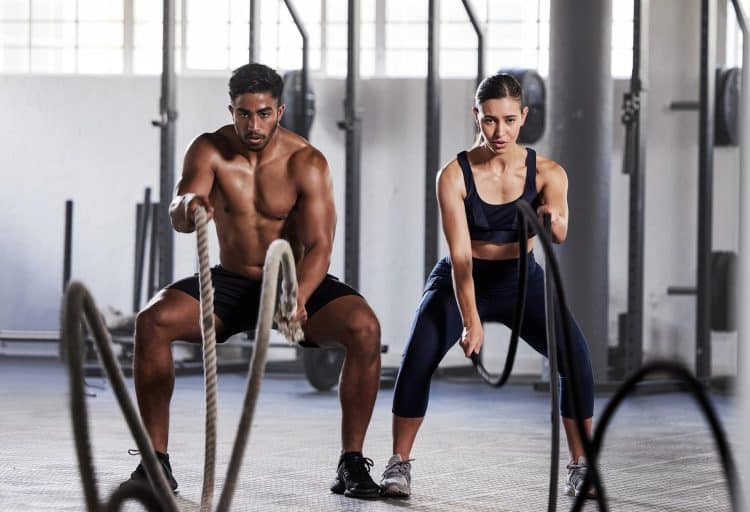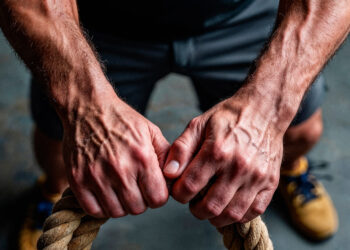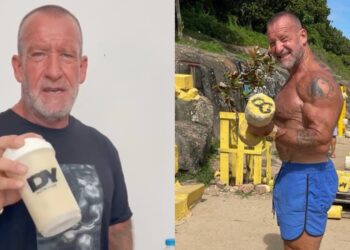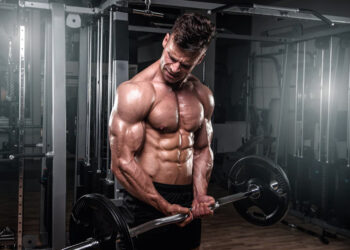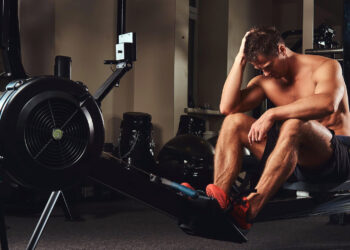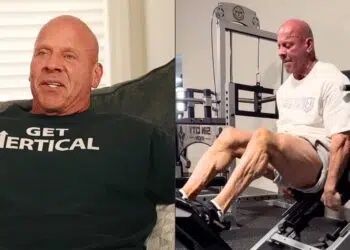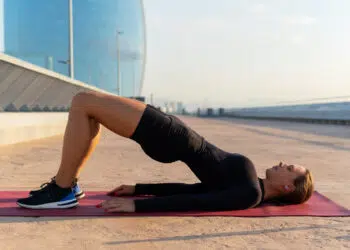Intense training takes a lot out of your body. It depletes muscle glycogen (stored carbohydrates), traumatizes muscle fibers, causes inflammation, floods your muscles with metabolic waste products, and fatigues your nervous system.
In short, your workouts break your body down, which is a process called catabolism.
In my experience as a veteran personal trainer, I know that exercisers often worry about catabolism as there are many negative connotations surrounding this term. However, catabolism is a critical trigger for muscle growth and improved fitness.
You see, it’s only after being broken down that your body bounces back and gets fitter and stronger. Without breakdown, there would be no corresponding build-up, known as anabolism. Anabolism mainly occurs between workouts and is fueled by good nutrition, rest, and sleep.
The sooner you flip the switch from catabolism to anabolism, the faster and more significant your fitness improvements will be. Consequently, I encourage all my clients to invest time and energy in methods that enhance recovery.
This includes:
Level Up Your Fitness: Join our 💪 strong community in Fitness Volt Newsletter. Get daily inspiration, expert-backed workouts, nutrition tips, the latest in strength sports, and the support you need to reach your goals. Subscribe for free!
-
- Post-workout cool-down
- Massage
- Foam rolling
- Post-workout meal
- Saunas
- Getting 7-9 hours of sleep
Another popular recovery-boosting strategy is cold showers and other types of cold therapy.
In this article, we reveal why and how to use cold showers to recover faster between workouts and beat post-training fatigue.
The Benefits of Cold Showers
Full disclosure: I don’t enjoy cold showers and don’t know many people who do. However, it’s easier to overcome this dislike when you understand how a cold shower can enhance your workouts.
The research-backed benefits of cold-water therapy after exercise include:
Reduced DOMS
DOMS, short for delayed onset muscle soreness, is the bane of many exerciser’s lives. It can turn otherwise fit and healthy people into immobile, stumbling wrecks, making further exercise unattractive.
While the exact causes of DOMS are unknown, we know that cold showers can help reduce its duration and severity (1). This is because cold exposure increases microcirculation, speeding up the removal of waste products from muscles. Cold showers also have an anti-inflammatory and analgesic or pain-killing effect.
Lower Rating of Perceived Exertion (RPE)
Where warm showers are relaxing, standing under a jet of cold water has the opposite effect and is mentally and physically stimulating. In short, it wakes you up! This boost of energy lowers your post-workout rating of perceived exertion or RPE. In other words, you won’t feel as tired.
While this effect won’t do much for your physical recovery, lowering your RPE after a workout will have a positive impact on your mood, creating a more favorable mental connection with exercise (1).
Raised Endorphins
Endorphins, which are closely related to morphine, are your body’s natural painkiller and feel-good hormone. Endorphins are what’s responsible for the so-called runner’s high. While all types of exercise produce endorphins, production also increases after a cold shower (2).
As such, while you might not enjoy a cold shower after exercise, you’ll feel great once you are done. This is partly due to the endorphins, but I suspect it’s also due to getting out from under that jet of icy water.
Improved Immunity
Immunity is an important factor in fitness. Avoiding illness means fewer missed workouts, leading to better overall progress. Frequent illnesses, even minor colds, can keep you out of the gym or make your workouts less effective and unenjoyable. Heavy squats while simultaneously contending with a runny nose or cough? Who needs that?!
While the effect is slight, research suggests that cold showers and other cold-water therapies increase your body’s ability to fight off illness (3). Fewer sick days mean more consistent training, which is one of the keys to fitness success.
Enhanced Fat Burning
Do you work out for fat loss and weight control? You are not alone. With a large and growing percentage of the population overweight or obese, maximizing fat loss is a common goal.
Needless to say, the best way to burn fat and lose weight is via kilocalorie restriction and exercise. However, research on PubMed suggests that cold showers and other cold-water therapies may ramp up fat burning (4).
While the fat-burning effect of cold showers is small, even slight advantages are worth pursuing in the quest to lose fat as fast as possible.
Level Up Your Fitness: Join our 💪 strong community in Fitness Volt Newsletter. Get daily inspiration, expert-backed workouts, nutrition tips, the latest in strength sports, and the support you need to reach your goals. Subscribe for free!
Increased Energy
Intense exercise can be exhausting. However, if you want to maximize your progress, you have to pay your dues by pushing your body to its limits. Needless to say, this can leave you feeling very fatigued, which could impact negatively on the rest of your day’s activities, e.g., work or social life.
Research published on PubMed suggests that cold showers are energizing (5). Study participants reported a caffeine-like effect after showering. This reenergizing effect will be very welcome, especially for early-morning exercisers.
In summary, while the effects are quite mild, cold showers after exercise offer several benefits, including reduced DOMS, lower RPE, increased endorphins, improved immunity, enhanced fat burning, and increased energy. As such, they may help promote recovery and ward off post-workout fatigue.
How To Take A Cold Shower After Exercise
While you could just hop in the shower and turn the dial to cold, you’ll probably get better results and enjoy the process more if you follow these steps. That’s especially true if, like most people, cold showers are usually something you endure or avoid rather than enjoy.
Cool Down Properly
Don’t end your workout abruptly, and step straight into a cold shower. Instead, perform some easy cardio, reducing the intensity over several minutes to gradually lower your heart and breathing rate. For example, run, jog, and then walk on a treadmill.
Next, spend a few minutes gently stretching the muscles you’ve just trained, paying extra attention to any that feel tight or sore.
Related: The Best Post-Gym Cool Down Exercises
Reduce the Temperature Gradually
Getting straight under a jet of cold water will come as a big shock to your body, making cold water therapy even less enjoyable than it already is. Instead, start your shower at a lukewarm temperature and lower the setting as you get used to it.
Splash the Water onto Your Body
Cold shower newbies often find stepping under a jet of freezing water uninviting. So, instead, splash handfuls of cold water over your legs, abdomen, arms, and chest to acclimate your body to the lower temperature. Then, when you feel ready, get under the water jets.
Increase the Duration a Little at a Time
Even a short cold shower can be beneficial, so don’t worry if you can only tolerate a few seconds under the freezing water. Set a target of just 20 seconds for your first cold shower and gradually increase the duration over the coming weeks. Add five seconds per shower, and you’ll be up to several minutes soon enough.
Use Localized Jets of Water
If you can, aim the cold water at the muscles you’ve just been training. For example, focus the water on your quadriceps, hamstrings, calves, glutes, and lower back after a leg workout. This may enhance recovery in the areas you need it most.
Try Alternating Between Hot and Cold Water
Contrast showers, where you alternate between hot and cold, may make your post-workout shower even better for recovery and fighting fatigue. Where the cold water causes your blood vessels to constrict, the warmer temperature makes them dilate and open up. This creates a pumping effect, increasing microcirculation and enhancing blood flow.
Some studies suggest contrast showers are even more effective than cold showers for enhancing recovery and preventing DOMS (6).
If you use the contrasting method, make sure you end your shower on the cold setting.
Be Consistent
Your first cold shower probably won’t be a lot of fun. You may even say to yourself, “Never again!” However, consistent cold showers are the name of the game if you want to enjoy all the benefits outlined in this article. Also, the more often you take a cold shower, the sooner you’ll get used to it and the less unpleasant it will become.
I suggest doing something like a 30-day cold shower challenge. Commit to taking a daily cold shower for a month, and it’ll soon become a habit. While you may never look forward to your cold showers, you can learn not to dread them.
Dry off and Dress Warmly
Don’t just stand there and shiver! Grab your towel and dry yourself vigorously to get your blood pumping and warm back up. Put on some extra clothes, too, as your core temperature may be slightly lower than usual. This is especially true for anyone who showers at a public facility and has to travel home/to work afterward.
Conclusion
Cold water therapies, which include cold showers, have been popular for centuries. Immersion in cold water has many reported benefits, including strengthened immunity, pain relief, and reduced fatigue. It may also help you recover faster between workouts.
However, there are mental benefits, too, and icy showers have been revealed as a possible treatment for depression. From personal experience, I can tell you that cold showers build mental toughness and resilience. It’s no coincidence that many branches of the armed forces incorporate cold water immersion in their training.
While cold showers have plenty of benefits, they are not compulsory, and your body will recover from exercise without them. In fact, some research suggests that active cool downs, e.g., easy cardio, stretching, etc., can be as effective (7) as cold water immersion.
However, few things are as refreshing as a post-workout cold shower. In my opinion, which comes from someone who dislikes cold water, a cold shower is one of the best ways to end a workout and fight post-exercise fatigue.
References:
- Xiao F, Kabachkova AV, Jiao L, Zhao H, Kapilevich LV. Effects of cold water immersion after exercise on fatigue recovery and exercise performance–meta-analysis. Front Physiol. 2023 Jan 20;14:1006512. doi: 10.3389/fphys.2023.1006512. PMID: 36744038; PMCID: PMC9896520.
- Shevchuk NA. Adapted cold shower as a potential treatment for depression. Med Hypotheses. 2008;70(5):995-1001. doi: 10.1016/j.mehy.2007.04.052. Epub 2007 Nov 13. PMID: 17993252.
- Janský L, Pospísilová D, Honzová S, Ulicný B, Srámek P, Zeman V, Kamínková J. Immune system of cold-exposed and cold-adapted humans. Eur J Appl Physiol Occup Physiol. 1996;72(5-6):445-50. doi: 10.1007/BF00242274. PMID: 8925815.
- Scott MC, Fuller S. The Effects of Intermittent Cold Exposure on Adipose Tissue. Int J Mol Sci. 2023 Dec 19;25(1):46. doi: 10.3390/ijms25010046. PMID: 38203217; PMCID: PMC10778965.
- Buijze GA, Sierevelt IN, van der Heijden BC, Dijkgraaf MG, Frings-Dresen MH. The Effect of Cold Showering on Health and Work: A Randomized Controlled Trial. PLoS One. 2016 Sep 15;11(9):e0161749. doi: 10.1371/journal.pone.0161749. Erratum in: PLoS One. 2018 Aug 2;13(8):e0201978. PMID: 27631616; PMCID: PMC5025014.
- Bieuzen F, Bleakley CM, Costello JT. Contrast water therapy and exercise-induced muscle damage: a systematic review and meta-analysis. PLoS One. 2013 Apr 23;8(4):e62356. doi: 10.1371/journal.pone.0062356. PMID: 23626806; PMCID: PMC3633882.
- Sellwood KL, Brukner P, Williams D, Nicol A, Hinman R. Ice-water immersion and delayed-onset muscle soreness: a randomized controlled trial. Br J Sports Med. 2007 Jun;41(6):392-7. doi: 10.1136/bjsm.2006.033985. Epub 2007 Jan 29. PMID: 17261562; PMCID: PMC2465319.

